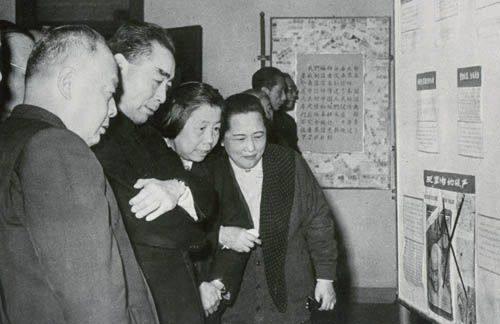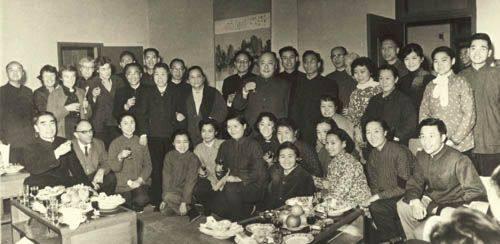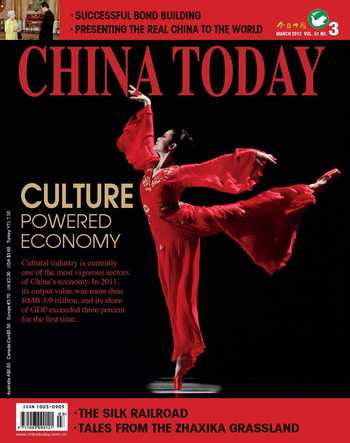The Birth and growth of a magazine (Part 2)

SOONG Ching Ling knew well that marketing is critical to the survival and success of a publication. She appointed Talitha Gerlach as marketing chief of China Reconstructs, and insisted that it set up its own distribution channels. At that time the China International Bookstore (predecessor to China International Book Trading Corporation) was the sole agent for all Chinese publications sold abroad. Maintaining distance from it, Soong Ching Ling surmised, could give more prominence to the non-governmental aspect of China Reconstructs. An independent marketing team would also bring higher efficiency to the nascent magazine. Part of Soong Ching Lings marketing tactics was to invite celebrities from all walks to write for the magazine. She also personally mailed individual issues to her friends overseas.
Running its own distribution team brought China Reconstructs into direct contact with its readers. The editing staff modified their coverage and writing style to cater to readers tastes and interests, according to their comments. Each readers letter was replied to within two weeks, and every reasonable demand was met, ranging from providing tourism information to helping buy local goods. These exchanges enhanced the magazines bond with its readers.
Free from the shackles of the official distribution mechanism, China Reconstructs devised individualized marketing programs that could be modified for different events at different times. The magazine set up stands at international conferences held in China in efforts to promote itself to foreign visitors, a bold and rare act among Chinese media at the time.
These efforts were well rewarded. The circulation of China Reconstructs soon topped that of all Chinese periodicals. It was also the only Chinese publication in the U.S. market, and retailed in bookstores and newsstands across the country. Its status as an unofficial magazine was the primary reason why it could enter the American market at a time when the relationship between the U.S. and the PRC was frozen.
Soong Ching Ling stressed from the very beginning of China Reconstructs that it must retain its non-governmental character – an opinion that then Premier Zhou Enlai backed. He told the magazine staff to bear in mind that the magazine was founded by Mme. Soong and was not a government mouthpiece, and should hence be free of clichés and not be overtly political. The premier also reminded editors about the subtle differences in approach to domestic and international readers, given the cultural gap and other factors affecting a persons thinking and reasoning.
Late Vice Premier and Foreign Minister Chen Yi and Liao Chengzhi, who held posts including vice director of the International Liaison Department of the Central Committee of the CPC (CCCPC), vice director of Foreign Affairs Office of the State Council, director of the CCCPC Committee of Overseas Chinese Affairs and second deputy secretary of the Leading Party Group of the Ministry of Foreign Affairs, also stated on several occasions that China Reconstructs should accurately report on the latest developments in New China. Chen Yi inscribed for the magazine the maxim “Facts speak louder than the best rhetoric.” The editing team of China Reconstructs heeded these instructions and consciously carried them out in their daily work.
Soong Ching Ling was very close to the magazine staff. To me, she was like a mom. When I was still with the China Welfare Institute, she routinely came to every office and invited us for tea or coffee in the yard.
After China Reconstructs was launched, she read every issue from cover to cover, prior to printing, and gave her thoughts and suggestions. She also contributed articles to it, totally 30 or more on various topics. Her writing was fluid and informative, setting down complicated issues in such a way that everyday people could understand and appreciate. An experienced writer herself, she could offer cogent advice on China Reconstructs reports.
She once expressed discontent with delays in production, warning that if the magazine did not appear promptly in the U.S. market the information it contained would be obsolete.
Falling behind schedule was a constant problem in the early years of the magazine. Undeveloped communication, transportation and printing technologies at the time made it nearly impossible for the publisher to be in total control of every step of the work. For instance, in those years it took one month for a con- signment of magazines to be shipped to the U.S. When China Reconstructs was first published in English only, journalists wrote articles in that language. After other editions came into being – Spanish in January 1960, French in April 1963, Arabic in March 1964 and Russian in January 1966 (suspended in December 1978), reports began to be based on Chinese copy and translated into different languages. This shift prolonged the work process and demanded even greater scrutiny at the copy editing stage, as subtle meanings could be lost or altered in the translation from one language to another.
Soong Ching Lings criticism prompted us to take potent measures to tackle publication tardiness. One was to set up a billboard in the doorway of the office building on which a daily updated chart showed how the editing and printing process was going. A supervisory post was also established. Its occupant closely followed work-flow and flagged an alarm whenever a section of the magazine ran behind schedule. The sight of him/her at the office door was not exactly welcome to us editors, but being hounded did improve our work efficiency.
Mme. Soong sometimes called us to her office to give her comments face to face. But in most cases she sent her suggestions in letters from Shanghai or through Jin Zhonghua, a close friend and senior journalist who was at the helm of the Chinese edition of the China Defense League Newsletter. His experience in media sector made Jin cognizant of the problems that might beset a new publi- cation, and he was in a good position to offer relevant advice. Jin Zhonghua came to the China Reconstructs offices each time he took a trip to Beijing.
China Reconstructs held photo exhibitions at its fifth and 10th anniversaries, to which Soong Ching Ling proudly invited state leaders including Premier Zhou Enlai, Chen Yi and Liao Chengzhi. Premier Zhou also met with the magazine staff at the 10th anniversary.
Mm. Soong felt a personal bond with the magazine that she had founded. She was therefore appalled when the editing rules she had imposed were abandoned under the political pressure of the decade-long “cultural revolution.” She spoke despairingly of this in several letters to friends during the period. I tried to oppose the leftist influences over our reports in those chaotic years, but was soon sent to the countryside, where I stayed for eight years. I did not resume my editing work until the political movement had ended.
For me, the 60th anniversary of China Today has come in the blink of an eye. I am honored to have worked for Mme. Soong Ching Ling and participated in the creation and development of the magazine. Although I left it in the 1980s, I have been following its progress and am delighted to see that it grows stronger and better, updating as the times change, just as Mme. Soong would have wished.


